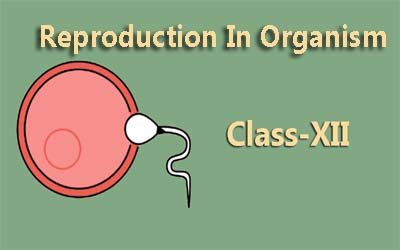Course description
Ecosystems are more than just pretty landscapes! They're bustling communities where living things interact with their non-living environment in fascinating ways. In Class 12 Ecosystem, you'll embark on a journey to explore these intricate webs of life.
The Ecosystem Defined:
We'll kick things off by defining an ecosystem – a functional unit where living organisms (biotic factors) like plants and animals interact with each other and the non-living physical and chemical environment (abiotic factors) like water, temperature, and sunlight.
The Building Blocks of Ecosystems:
Get ready to meet the key players in this ecological drama! We'll delve into the two main components of an ecosystem:
Biotic Factors: These are the living organisms. We'll categorize them into:
Producers: Plants that capture sunlight and produce energy through photosynthesis, forming the base of the food chain.
Consumers: Herbivores that eat producers, carnivores that eat other animals, and omnivores that eat both plants and animals.
Decomposers: These unseen heroes break down dead organic matter and return nutrients back into the ecosystem.
Abiotic Factors: These are the non-living components that influence the ecosystem, including:
Physical factors: Water, temperature, sunlight, and soil type.
Chemical factors: Availability of nutrients and minerals.
Energy Flow and Nutrient Cycling:
An ecosystem is a dynamic system where energy flows and nutrients cycle. We'll explore how:
Energy flows: Sunlight captured by producers is the ultimate energy source. It flows through the food chain as consumers eat each other, ultimately returning to the environment as heat.
Nutrients cycle: Essential elements like carbon and nitrogen are constantly cycling within an ecosystem. We'll explore key cycles like the carbon cycle and nitrogen cycle, understanding how these processes sustain life.
Beyond the Course:
Depending on your curriculum, you might delve deeper into specific areas like:
Different types of ecosystems (forests, grasslands, deserts, aquatic ecosystems)
Ecological pyramids (energy pyramids, biomass pyramids)
Human impact on ecosystems (pollution, habitat destruction)
বাস্তুতন্ত্রগুলি কেবল সুন্দর প্রাকৃতিক দৃশ্যের চেয়ে বেশি কিছু! তারা ব্যস্ত সম্প্রদায় যেখানে জীবন্ত জিনিসগুলি তাদের নির্জীব পরিবেশের সাথে আকর্ষণীয় উপায়ে যোগাযোগ করে। দ্বাদশ শ্রেণীর বাস্তুতন্ত্রে, আপনি জীবনের এই জটিল জালগুলি অন্বেষণ করার জন্য একটি যাত্রা শুরু করবেন।
বাস্তুতন্ত্রের সংজ্ঞাঃ
আমরা একটি বাস্তুতন্ত্রকে সংজ্ঞায়িত করে জিনিসগুলি শুরু করব-একটি কার্যকরী ইউনিট যেখানে উদ্ভিদ এবং প্রাণীর মতো জীবন্ত (জৈবিক কারণ) একে অপরের সাথে যোগাযোগ করে এবং অ-জীবন্ত শারীরিক এবং রাসায়নিক পরিবেশ (অজৈব কারণ) যেমন জল, তাপমাত্রা এবং সূর্যালোক।
বাস্তুতন্ত্রের বিল্ডিং ব্লকঃ
এই পরিবেশগত নাটকের মূল খেলোয়াড়দের সাথে দেখা করার জন্য প্রস্তুত হন! আমরা একটি বাস্তুতন্ত্রের দুটি প্রধান উপাদান নিয়ে আলোচনা করবঃ
জৈব উপাদানঃ এগুলি হল জীবন্ত প্রাণী। আমরা তাদের মধ্যে শ্রেণীবদ্ধ করবঃ
উৎপাদকঃ উদ্ভিদ যা সূর্যালোক ধারণ করে এবং সালোকসংশ্লেষণের মাধ্যমে শক্তি উৎপাদন করে, খাদ্য শৃঙ্খলের ভিত্তি গঠন করে।
ভোক্তাঃ উদ্ভিদভোজী প্রাণী যারা উৎপাদকদের খায়, মাংসাশী প্রাণী যারা অন্যান্য প্রাণীদের খায় এবং সর্বভোজী প্রাণী যারা উদ্ভিদ ও প্রাণী উভয়কেই খায়।
ডিকম্পোজারঃ এই অদৃশ্য নায়কেরা মৃত জৈব পদার্থগুলি ভেঙে ফেলে এবং বাস্তুতন্ত্রে পুষ্টি ফিরিয়ে দেয়।
অজৈব উপাদানঃ এগুলি অ-জীবন্ত উপাদান যা বাস্তুতন্ত্রকে প্রভাবিত করে, যার মধ্যে রয়েছেঃ
ভৌত কারণঃ জল, তাপমাত্রা, সূর্যালোক এবং মাটির প্রকার।
রাসায়নিক কারণঃ পুষ্টি ও খনিজ পদার্থের প্রাপ্যতা।
শক্তির প্রবাহ এবং পুষ্টি চক্রঃ
বাস্তুতন্ত্র হল একটি গতিশীল ব্যবস্থা যেখানে শক্তি প্রবাহিত হয় এবং পুষ্টি চক্র হয়। আমরা অনুসন্ধান করব কিভাবেঃ
শক্তির প্রবাহঃ উৎপাদকদের দ্বারা গৃহীত সূর্যালোক হল শক্তির চূড়ান্ত উৎস। ভোক্তারা একে অপরকে খেয়ে শেষ পর্যন্ত তাপ হিসাবে পরিবেশে ফিরে আসার সাথে সাথে এটি খাদ্য শৃঙ্খলের মধ্য দিয়ে প্রবাহিত হয়।
পুষ্টি চক্রঃ কার্বন এবং নাইট্রোজেনের মতো প্রয়োজনীয় উপাদানগুলি একটি বাস্তুতন্ত্রের মধ্যে ক্রমাগত চক্রাকারে চলছে। আমরা কার্বন চক্র এবং নাইট্রোজেন চক্রের মতো মূল চক্রগুলি অন্বেষণ করব, এই প্রক্রিয়াগুলি কীভাবে জীবন বজায় রাখে তা বুঝতে হবে।
কোর্সের বাইরেঃ
আপনার পাঠ্যক্রমের উপর নির্ভর করে, আপনি নির্দিষ্ট ক্ষেত্রগুলিতে আরও গভীরভাবে অনুসন্ধান করতে পারেন যেমনঃ
বিভিন্ন ধরনের বাস্তুতন্ত্র (forests, grasslands, deserts, aquatic ecosystems)
পরিবেশগত পিরামিড (energy pyramids, biomass pyramids)
বাস্তুতন্ত্রে মানুষের প্রভাব (pollution, habitat destruction)



















